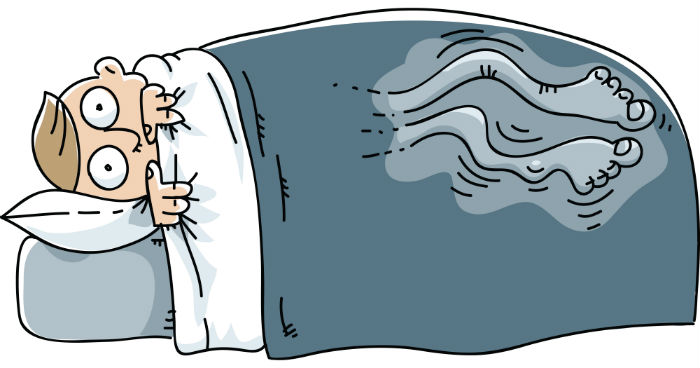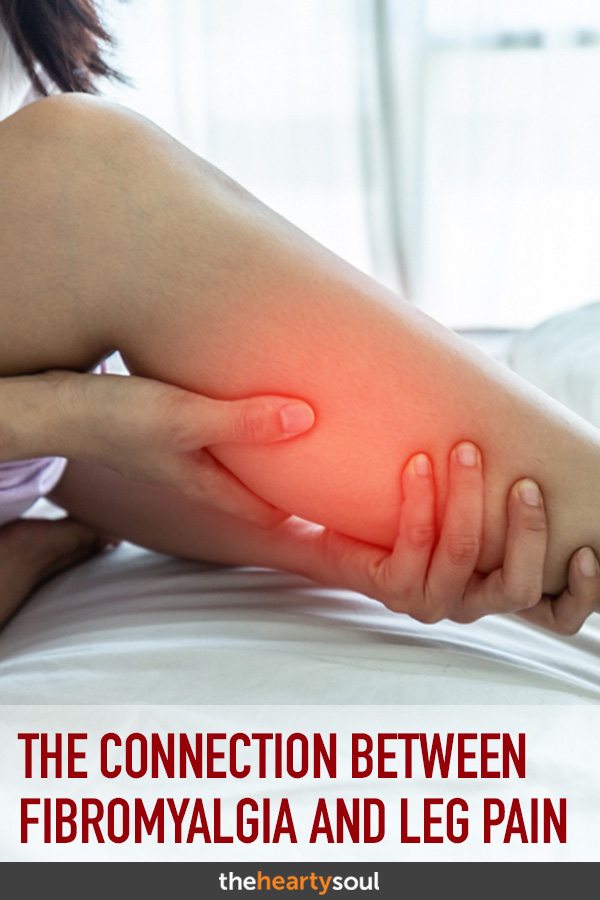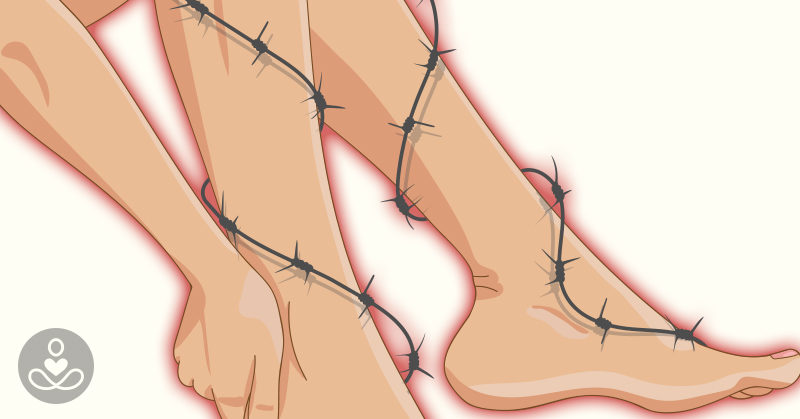If you’re reading this, it’s because you want to more about the F-word no one likes talking about – fibromyalgia, the mysterious chronic pain disorder that many people suffer from, silently. Because the list of symptoms varies so widely from person to person, doctors run the risk of misdiagnosing the problem or even overlooking it entirely. As you’re probably aware, fibromyalgia can cause intense waves of numbing, throbbing, deep, sharp, or burning pain anywhere and everywhere. On top of more common symptoms such as fatigue, anxiety or depression, headaches, and memory problems, leg pain especially plagues fibromyalgia sufferers. [1]
Is It Normal to Get Leg Pain with Fibromyalgia?

Ask anyone with fibromyalgia to describe their pain and somewhere along the line, they will compare it to the inflammatory pain caused by tendinitis or osteoarthritis… That’s because fibromyalgia affects the body’s “tender points” which include tendons, muscles, and joints. [1]
According to Healthline, these points are spots on the body that are extremely painful, even if the slightest bit of pressure is applied. Doctors have identified nine pairs of tender points, for a total of 18, in order to help determine whether or not someone has fibromyalgia: [2]
- Both sides of the back of the head
- Both sides of the neck
- Top of each shoulder
- Shoulder blades
- Both sides of the upper chest
- Outside of each elbow
- Both sides of the hips
- Buttocks
- Insides of the knees
Regardless of whether you’re laying down, sitting or standing up, leg pain persists and can worsen if you stay in the same position for too long. So, you can see how it can make things like working a sedentary job, sitting for dinner, or sleeping near impossible. You will often experience leg pain inside of each knee or on the hip, just behind the hip bone, and can travel to the surrounding area at least a few inches making the muscles feel weak.
Read More: Commonly Prescribed Drug Could Slow Alzheimer’s Disease, Study Says
What Contributes to or Causes Fibromyalgia Leg Pain?

Although researchers are still somewhat stumped on the root cause of fibromyalgia, there are some symptoms and conditions that may be able to shed some light…
Fibromyalgia and Restless Legs Syndrome

People with fibromyalgia have a higher chance of also having restless leg syndrome (RLS), according to a 2010 study published in the Journal of Clinical Sleep Medicine. [3] It’s a disorder that causes an unpleasant twitching sensation in the leg muscles that can only be remedied by fidgeting or moving your legs. [4] Researchers gathered 172 fibromyalgia patients (93% of whom were women) and 63 people who reported being pain-and-fatigue-free. After looking at who had restless leg syndrome, they found that 33% of fibromyalgia patients had RLS. (Only 3% of the pain-and-fatigue-free group had the syndrome!) [3]
Fibromyalgia and Neuropathy

Painful tingling or burning sensations in the feet can occur in some fibromyalgia patients and it may be caused by something called neuropathy. In November 2013, a study published in the journal Pain explored the similarities between fibromyalgia and another disease called small-fiber polyneuropathy (SFPN), wherein small fibers in the skin become damaged. [5]
In the 57-person study, 27 of the participants had fibromyalgia. Researchers found that 46% of them had SFNP, “a recognized cause of chronic widespread pain for which there are accepted, objective tests.” [6] “Until now, there has been no good idea about what causes fibromyalgia, but now we have evidence for some but not all patients,” said study author and associate professor of neurology at Harvard Medical School, Anne Louise Oaklander. [6] “Fibromyalgia is too complex for a ‘one size fits all’ explanation.”
Read More: 15 Poor Hygiene Habits That Can Harm Your Health
Fibromyalgia and Tender Points

Also known as “trigger points,” the nine pairs mentioned above can result in excruciating leg pain. In addition to these tender points, existing arthritis might also trigger longer-lasting muscle and joint pain due to inflammation. Although arthritis pain doesn’t last as long as fibromyalgia pain, the two most common symptoms shared between the two are morning stiffness and dull achiness in the joints. [7]
Natural Remedies and Treatments for Fibromyalgia Leg Pain

Until researchers are able to narrow down the true cause of fibromyalgia, it may be a long time before effective natural treatments become known. However, there are smaller yet significant steps fibromyalgia sufferers can take in order to live fuller, less painful lives. Here are some of them…
- Casual walking
- Stretching with exercise bands
- Riding a stationary bike
- Eating an anti-inflammatory, fibro-friendly diet
- 21 Most Effective Tips for Relieving Fibromyalgia Pain You’ll Ever Find

Read More: Constantly Snacking? Here’s How it Can Be Harming Your Health
Sources
- [1] Fibromyalgia Symptoms. (n.d.). Retrieved from https://www.webmd.com/fibromyalgia/guide/fibromyalgia-symptoms#1
- [2] Fibromyalgia Symptoms: Pain, Fatigue and More. (n.d.). Retrieved from https://www.healthline.com/health/fibromyalgia-symptoms#tender-points
- [3] Viola-Saltzman, M., Watson, N. F., Bogart, A., Goldberg, J., & Buchwald, D. (2010, October 15). High Prevalence of Restless Legs Syndrome among Patients with Fibromyalgia: A Controlled Cross-Sectional Study. Retrieved from https://www.ncbi.nlm.nih.gov/pmc/articles/PMC2952743/
- [4] Restless Legs Syndrome. (n.d.). Retrieved from https://www.webmd.com/brain/restless-legs-syndrome/restless-legs-syndrome-rls#1
- [5] Oaklander, A. L., Herzog, Z. D., Downs, H., & Klein, M. M. (2013, November). Objective evidence that small-fiber polyneuropathy underlies some illnesses currently labeled as fibromyalgia. Retrieved from https://www.ncbi.nlm.nih.gov/pmc/articles/PMC3845002/
- [6] McGreevey, S. (2013, July 31). Nerve damage and fibromyalgia. Retrieved from https://news.harvard.edu/gazette/story/2013/07/nerve-damage-and-fibromyalgia/
- [7] Signs and Symptoms of Rheumatoid Arthritis vs. Fibromyalgia. (n.d.). Retrieved from https://www.healthline.com/health/rheumatoid-arthritis-vs-fibromyalgia#symptom-comparison

